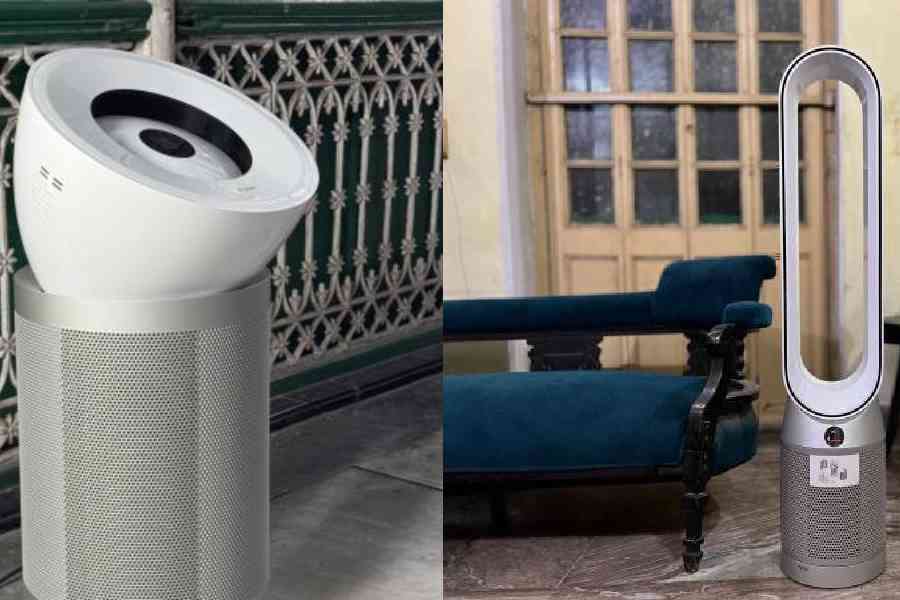Outdoor air pollutants can influence indoor air chemistry, making the air less healthy while indoor air pollution can worsen asthma and other respiratory issues. Do we need an air purifier, we asked Shawn Navarednam, Dyson engineer. Here’s what he has to say.
Many Indian households rely on traditional methods like opening windows or burning incense, which significantly worsens air quality in India, particularly indoors. How does Dyson educate consumers about the benefits of purifier technology?
Many objects throughout our homes and workplaces can contribute to poor indoor air quality by releasing gases, particles, debris, and other contaminants into the air. Homes are equally susceptible to becoming contaminated by outdoor air pollution as indoor pollution sources can include a variety of factors and materials that affect the air quality inside a building or home.
Some common indoor pollution sources can originate from everyday activities such as cooking, using household cleaning products, burning candles or incense, and smoking tobacco products, all of which emit VOCs. Additionally, NO2 can enter indoor spaces from outdoor sources such as car emissions when windows are open. Particulate matter from pets, pollen, and dust also contributes to indoor pollution. Even sitting on a sofa can reintroduce dust pollutants into the air.
Dyson continuously works to educate consumers about the hidden dangers of indoor air pollution, emphasising how certain traditional practices can worsen air quality. Burning incense or candles and opening windows during high AQI periods introduce VOCs and outdoor pollutants into indoor spaces. Through targeted campaigns, detailed demonstrations, and the MyDyson app, Dyson provides real-time insights into both indoor and outdoor air quality. By highlighting the inefficiency of traditional methods, Dyson showcases how its purifiers detect, capture, and project clean air using advanced HEPA filtration and activated carbon filters, empowering households to make informed decisions.
How can Dyson’s technology be adapted or scaled for larger spaces like offices or schools, ensuring consistent air quality for a greater number of people?
Dyson’s advanced air purification technology is designed to adapt to diverse spaces, including larger environments like offices and schools. For example, the Dyson Purifier Big+Quiet is specifically engineered to deliver powerful, long-range projection, effectively purifying large spaces, making it ideal for homes with open-plan living areas. While other Dyson purifiers purify an entire room, the Dyson Purifier Big+Quiet goes beyond, using new cone aerodynamics technology.
The new purifier projects air over 10 meters to purify large spaces, offering up to 87 litres of airflow per second, compared to existing Dyson purifiers such as TP09 which offer 41.7 litres of airflow per second, making it perfect for large homes.
It is acoustically engineered to operate quietly even at the highest power setting, producing only 56 decibels. This ensures continuous reduction of pollution without any annoying noise. It is equipped with filters 3.8 times larger than its predecessors, meaning they offer extended filter life.
Additionally, you have the option to change the angle of your airflow to 0°, 25°, or 50° as well as the option to set your purifier to mimic a gentle breeze through Breeze Mode. As with previous Dyson products, Dyson Purifier Big+Quiet contains all the safety features that allow the machine to be unattended while running, whether that be in manual mode or auto mode.
Despite its larger size, the Purifier Big+Quiet draws roughly the same power as previous models, ensuring energy efficiency.
What are some of the misconceptions/myths you want to break regarding air purifiers, and how does Dyson address them?
A common misconception is that air pollution is primarily an outdoor issue. Dyson aims to break this myth by emphasising that indoor air can be up to 10 times worse than outdoor air due to pollutants like VOCs, PM2.5, and pet dander. Another myth is that sealing windows eliminates pollutants — Dyson addresses this by demonstrating how pollutants from cooking, cleaning, or even sitting on furniture can compromise indoor air.
Another prevalent myth is that pollution only impacts us when it is visible. Dyson challenges this by showcasing how invisible pollutants, such as nitrogen oxides, can be equally harmful, if not more so. Dyson’s sensors, capable of detecting these unseen dangers, work with advanced filtration to provide real-time protection.
The belief that air pollution is a seasonal problem is another misconception Dyson addresses. Pollution is a year-round challenge, with seasonal variations bringing different pollutants. For instance, PM2.5 levels can persist throughout the year, highlighting the need for continuous air quality management.
Additionally, the belief that air purifiers only function during visible pollution events is countered by Dyson’s sensors, which detect even invisible pollutants. Dyson’s real-time data and filtration demonstrations effectively dispel these myths, building consumer trust.
What are the long-term effects of using a Dyson purifier in a typical Indian household, considering the varying levels of pollution throughout the year?
The long-term use of Dyson purifiers in Indian households significantly enhances overall well-being by maintaining consistent indoor air quality. Over time, they reduce exposure to pollutants like PM2.5, VOCs, and allergens, mitigating risks associated with respiratory and cardiovascular health issues. Dyson purifiers automatically adapt to seasonal variations, such as heightened pollution during Diwali or stubble-burning periods, ensuring optimal year-round performance.
Additionally, the device’s ability to monitor and report air quality changes empowers users to adopt healthier habits, contributing to a long-term reduction in pollution-related health concerns.
Dyson’s recent Global Connected Data Report provides interesting insights into air quality trends in Delhi and Mumbai. Based on data collected from Dyson purifier users, how does Dyson plan to utilise this data to improve its products and better address the air quality challenges faced by residents in these heavily polluted urban environments?
According to Dyson’s Global Connected Data, Dyson air quality data scientists analysed more than half a trillion data points to profile indoor air quality on a large scale, covering 39 countries (including India) and 44 individual cities (such as Delhi and Mumbai), showing the patterns of indoor air quality through a typical day, month, and year. These machines anonymously record air pollution levels including particle pollution (PM2.5 and PM10) and VOCs. Each connected purifier continuously monitors and records indoor air quality parameters, sending real-time data to Dyson’s centralised database. This data includes information on pollutant levels, usage patterns of purifiers (such as operational modes and timing), and geographic location.
Depending on what the data scientists are investigating, certain filters will be applied to the data. For example, when performing air quality computations, we remove any data points where the machine is actively purifying or in auto mode to avoid skewing the dataset. The goal of the project is to provide a real-life view on air quality in real homes, so we don’t want the air to have been cleaned by the Dyson Purifier – hence choosing machines that are not purifying. All air quality data is stored separately from the owner’s personal data.
By aggregating and analysing this vast dataset, Dyson identifies air quality trends, pollutant hotspots, seasonal variations, and behavioural patterns related to air purifier usage. This insight enables Dyson to develop more effective air purification solutions and provide valuable information to users.











